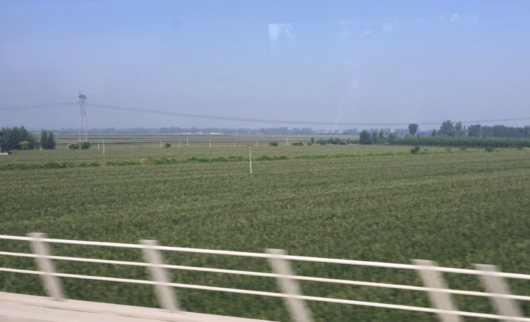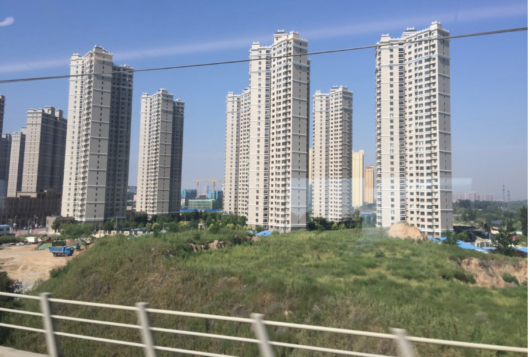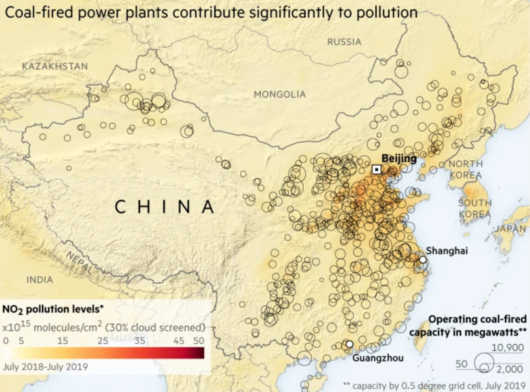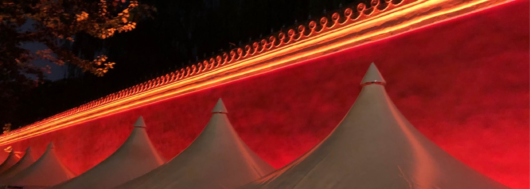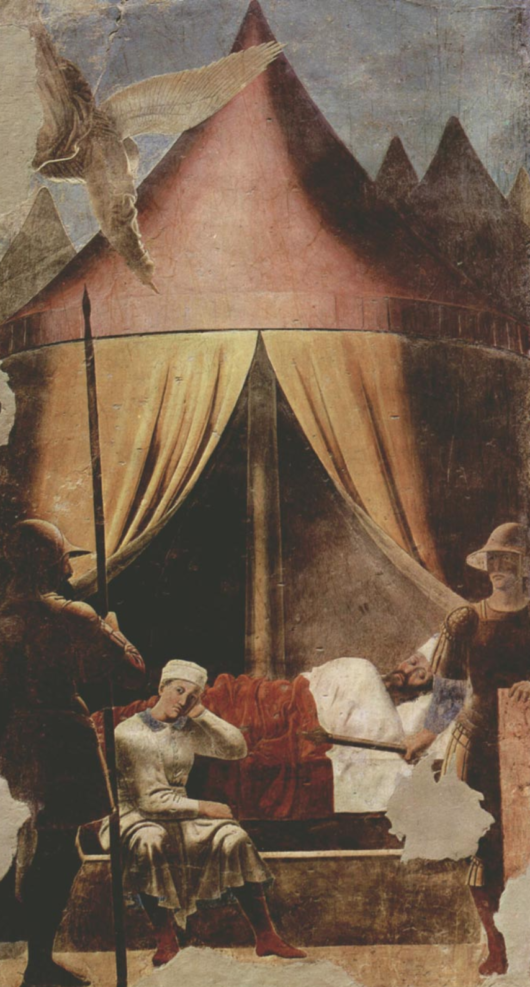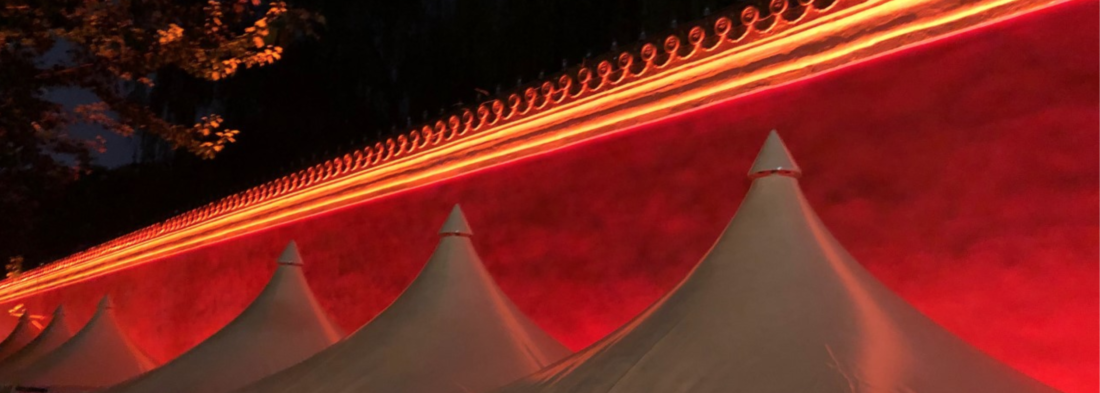Land of bridges and tunnels
Guizhou is a relatively poor province in southwestern China, with lots of long tunnels and high bridges. And when I say “southwestern China”, I actually mean southeastern China, just as “midwestern” states like Ohio are actually eastern states. Last week I traveled to Guizhou, and this overly long blog post will offer some random observations on everything from economics to travel tips.
1. The World in a Day
For most of human history, it was impossible to grasp the range of the habitable world in a single day. Beginning in the mid-20th century, one could fly from a cool region to a hot region in one day. But that was an artificial experience—you missed everything in between. That all changed in 2012, when China built a high speed rail line from the north to the south of the country. Now you could board a train at 9am in cold, snowy Beijing, and get off 8 hours later in tropical Guangzhou, at the same latitude as Havana.
A few years later the line was extended further south to Hong Kong, where you arrive an hour later. For the first time ever, humans can see the gradual change in landscape from the temperate zone to the tropics, all in a single day.
2. From India to Iowa
Twenty five years ago, my wife and I took a sleeping car train from Beijing to Wuhan, about half way down to the south. The train was pretty primitive, both slow and filthy. I was curious to see how things had changed since our honeymoon.
The first part of the trip is the highly populated North China Plain, a roughly triangular flat region with Beijing at the apex. My initial impression is that the Chinese countryside has changed almost as much as the cities. In 1994, I was struck by the number of peasants I saw working out in their small fields or walking along roads. It looked very different from where I grew up in the American Midwest, where the huge fields look empty as you drive by. On this trip, I didn’t see a single person out in the fields for at least the first 300 miles. In fairness, it was a hot September day, and perhaps there was no reason to be outside. Nonetheless, the Chinese now seem to spend more time indoors, and they are also more obese (albeit less so than Americans.)
There were other changes as well. There were now lots of very large cornfields, much like where I grew up:
Presumably this corn is harvested by machines. I seem to recall more wheat in 1994; perhaps the corn reflects the greatly increased consumption of meat in China. In any case, it was as if the North Chinese Plain had transitioned from India to Iowa in 25 years. Except that the Chinese farmers are still much poorer than those in Iowa.
The houses in rural villages looked bigger and more modern (albeit unattractive), whereas back in 1994 the rural villages contained small, crumbling, dirty grey brick dwellings. And there was vastly more evidence of rural factories, superhighways, warehouses, etc. Most notably, the cities we passed through in Hebei and then Henan province were now full of those boring 30 story apartment buildings that are ubiquitous in urban China. Unlike in America, even “small” Chinese cities (say 100,000 to 2,000,000 people) are now completely dominated by tall apartment buildings:
BTW, the Chinese view Henan people as somewhat untrustworthy (which is really saying something.) Hence, they are discriminated against, even though they are Han Chinese.
The North China Plain is also highly polluted; indeed Beijing may be the only large city in the world where air pollution gets worse as you go out of the city into the countryside. One problem is coal burning, which is concentrated in Hebei, Henan, and Shandong:
As the train traveled further south, the landscape gradually became hillier, greener and wetter. At Wuhan (in Hubei province) we crossed the wide Yangtze river, and soon after we were in Hunan province. (English translations for provinces, starting in Beijing: North Capital, River North, River South, Lake North, Lake South.) The houses in Hunan looked surprisingly nice, but that’s probably due to their proximity to the rail line—Hunan is relatively poor:
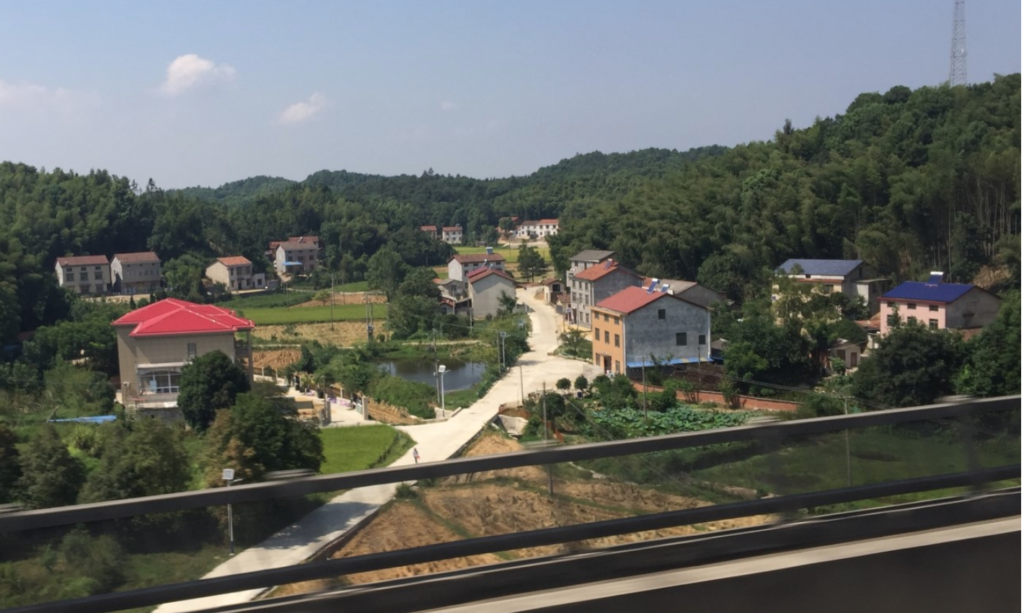
3. Bridges and Tunnels
At Changsha we took a right turn to the southwest, and left the Beijing-Guangzhou line. Beginning in western Hunan and throughout Guizhou it seemed like almost non-stop tunnels and bridges—mostly tunnels. I thought about the engineering decision as to whether to use more tunnels or more bridges, and concluded that tunnels must be cheaper per unit of distance. By lowering the rail line there are more miles of tunnels and fewer miles of bridges. Very little of the line is on flat ground.
Despite the attempt to rely more on tunnels than bridges, Guizhou ended up with 40 of the world’s 100 tallest bridges, including the very tallest. Read that again. I didn’t say China had 40% of the world’s tallest (which would be a major achievement), I said a poor, small province in the interior with only 2.5% of China’s population has 40 of the world’s 100 tallest bridges.
Guizhou doesn’t have the world’s longest tunnels due to the fact that its landscape is very “choppy”, with endless lumpy “karst” mountains made out of limestone. But there are many, many 1 to 5-kilometer tunnels. Often you enter a new long tunnel just 100 meters after exiting the previous tunnel. While building one new tunnel they recently encountered a huge cavern, and had to build a span 93 meters long across a cave in the middle of a mountain.
While the Chinese high speed rail (HSR) system is justly famous, the new expressway system is also quite impressive, roughly twice the length (so far) of America’s much more famous system. And it was built in far more difficult terrain, with the same reliance on bridges and tunnels as the HSR system. They are toll roads, which may help explain why it is currently underutilized. It remains to be seen whether China will grow into its expressway system as they’ve done with the now crowded HSR lines. As of today, it’s just more Chinese “malinvestment”, at least in Guizhou.
After nearly a month in China, I am more convinced than ever that their government should focus on building infrastructure and nothing else, other than taking their boot off the Chinese people. Especially the Uyghur people.
4. Chesterton’s Chinese Fence
As in India, the south is nicer than the north. After 8 1/2 hours we arrived in Guizhou’s capital (Guiyang), which was actually cooler than Beijing (due to the altitude), and much less dusty. Nonetheless, Guizhou is warm enough to have lots of banana trees. We stayed one night in an inexpensive 5-star hotel in Guiyang, right next to a Rolls Royce dealership. As we walked out to look for a restaurant, very attractive young ladies were approaching the hotel to provide entertainment for wealthy Chinese travelers. Extreme inequality favors rich men. A few blocks later we were led (misled) by GPS into dark dirty alleyways with snarling dogs roaming around.
Guiyang is much poorer than Beijing, but also far more developed than Kunming was when I visited in 1996. (Kunming is a similar size city in next door Yunnan.) Because Guiyang is poorer than Beijing, it has more of the Chinese “craziness” I recall from earlier visits. Often, it’s just minor things. The restaurant charged us money for a tiny set of paper napkins, and the waitress had a clear plastic mouthguard to shield diners from “germs”. The table was inside a giant birdcage. The taxi driver had a tv mounted on the dash, and watched soaps as he drove us around. (BTW, the taxis in China often lack seat belts.)
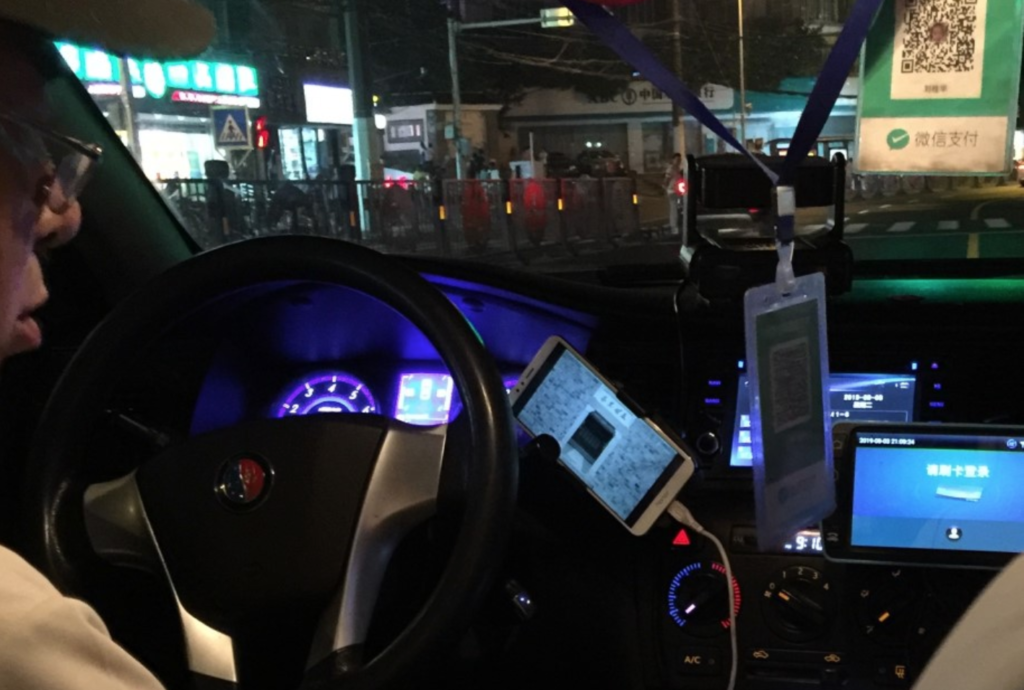
China is full of puzzling things that seem somehow “wrong”. There are annoying fences and walls everywhere, symbolic of how the authorities like to keep everything very regimented. Some of the annoyances may have a justification—perhaps they need fences along roads to keep pedestrians from spilling out into traffic. But do they really need TSA style security for people entering a small tourist bus? Is this a likely target of terrorists?
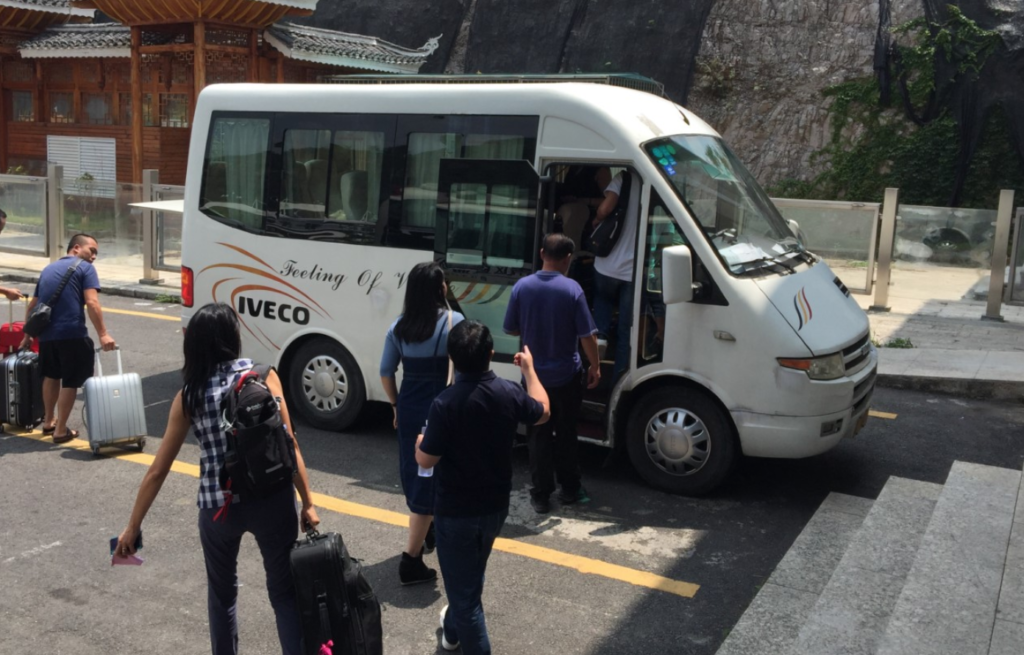
While some of the craziness in China may be justified on Chestertonian grounds, surely not all of it can be explained away. (Although if he were alive, Chesterton would view modern China as an almost perfect dystopia. Imagine Chesterton visiting a Foxconn factory.)
5. China’s Ethnic Minorities
We stayed in Guiyang just one night, and then spent the next seven nights in five different locations—not a good idea. We took the HSR to the mid-size industrial town of Kaili, recently made famous by the world’s hottest new director. From there we caught a series of buses to a village inhabited by the Miao ethnic group, which is related to the Hmong tribes of southeast Asia.
Guizhou is 37% minority (vs. 9% for China as a whole), part of the large collection of minorities in southwestern China. These groups are not as famous as the Tibetans, Uyghurs and Mongolians, but are far more numerous. They were forced into less productive mountain areas during the Han demographic expansion, and remain much poorer and less well educated than the Han Chinese. To westerners they look East Asian, however, so it’s not really a racial difference.
The quaint Miao villages and colorful costumes are a big draw for Han Chinese tourists. In China there is no PC squeamishness about viewing minorities in colorful costumes as charming and primitive.
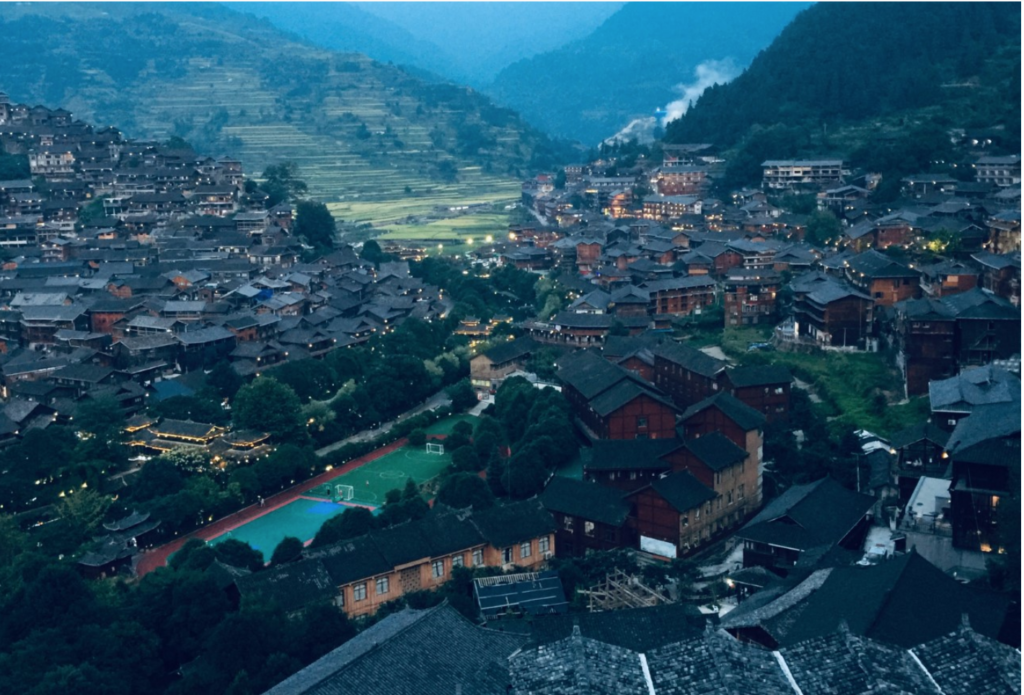
I saw a couple of westerners in the Miao village, but absolutely no more over the subsequent 6 days as I traveled through Chinese national parks thronged with tens of thousands of tourists, all Chinese (or at least East Asian.) The fact that there were no westerners in any of the next 4 stops is an indication that you do not want to follow in my footsteps. Trust the market.
We took a grueling 9-hour bus trip (four buses) from the Miao village to a place with lovely rice terraces that isn’t in any guidebook, not even (I’m told) Lonely Planet. Travel in rural China is really, really hard, even if you know the language. If not, forget it. Without my wife I never would have been able to visit some of these spots. China does not offer adequate maps (paper or internet). We only made it to the next stop before dark because one bus driver flagged down our next bus, which had already left and was going in the other direction, and we shifted our luggage from one to the other.
The rice terraces we saw (one of the three best examples in China), were located roughly halfway between Libo and Congjiang on this Google map, in a tiny unmarked village called Jiabangjiang—near the Guangxi border:
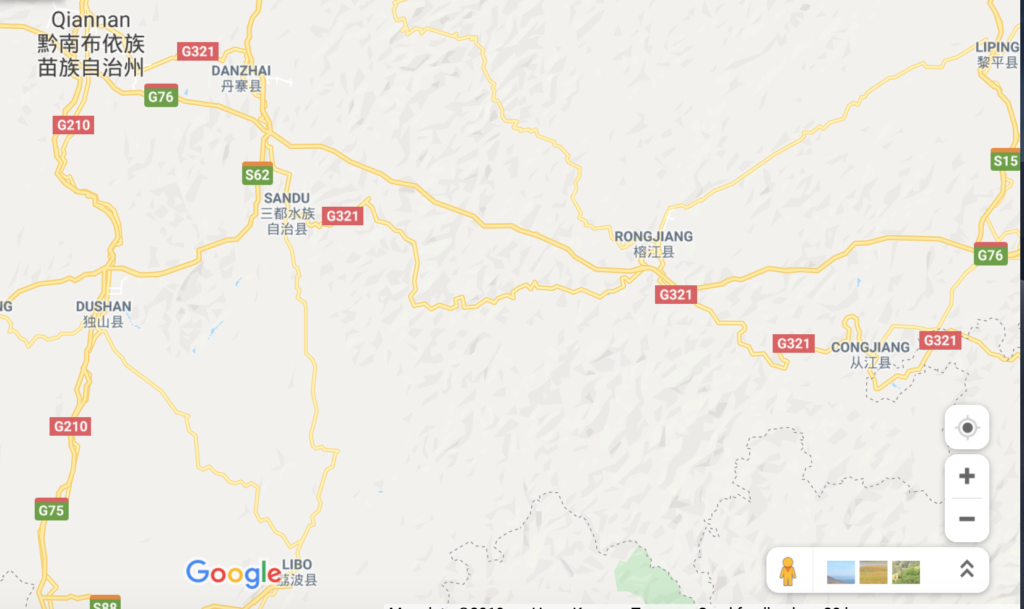
Jiabangjiang is the closest I’ve ever come to “middle of nowhere” in China. It’s surprisingly hard for tourists to ever seen the “real China”, as they usually see either cities or rural areas of tourist appeal. The non-tourist villages our bus went through are probably the closest I’ll ever get to the typical Chinese countryside of the interior provinces.
The rice terraces were indeed stunning, but because of our miscalculation on travel times we only had a few hours to observe them. I recall my wife paying 7 cents for a metal knife to cut some fruit she purchased—probably the last time in her life she ever pays less than 10 cents for a durable good. I recall being woken up at 7am by a massive fireworks demonstration in this tiny village of a few hundred people. WTF?!?!? It turns out that we happened to arrive right before the Miao New Year’s Day, which weirdly is in early September. When we went out for breakfast it was like walking through Syria or Iraq during their most intense fighting; there were explosions going on all over, as people threw long strings of powerful firecrackers into the streets. (Not the wimpy ones used in America.)
Now return to the map. It took us 9 hours to go the roughly 35 miles (as the crow flies) to our next stop in Libo. We began by going in the exact opposite direction—northwest past Congjiang to a HSR station. We and several other tourists missed the train by 5 minutes and had to wait 90 minutes because our driver decided to stop and get the van washed about 5 miles before the train station. WTF?!?!?
Then 40 minutes on high speed rail to Duyun. Don’t see it on the map? That’s because it’s called Qiannan on the map. That sort of thing is common on Chinese maps. Later I learned that a (shortcut) expressway from Rongjiang to Libo was completed in early 2019, but we had no knowledge of this at the time, as it’s still not on Google maps. Ask the locals? Are you joking? Libo might as well be on the other side of the moon. I doubt the locals even know there’s a trade war with the US going on. Then another few hours by bus from Duyun/Qiannan to Libo. The whole trip was probably over 200 miles, to go 35.
6. Tourism, Chinese Style
Spectacular Jiabangjiang had only a handful of tourists, but with Libo we began three major stops full of Chinese tourists. While the scenery is beautiful, it’s not quite in the class of the other Chinese parks cited in its promotional material, such as Guilin, Jiuzhiagou, and Zhangjiajie. See the originals instead. Instead, the greatest interest lay in observing the Chinese tourism industry in action.
Let’s begin with the positive. The Chinese have done a fantastic job improving their facilities. The toilets used to be awful, and now they are often first rate. These urinal dividers were works of art (and there are similar examples elsewhere):
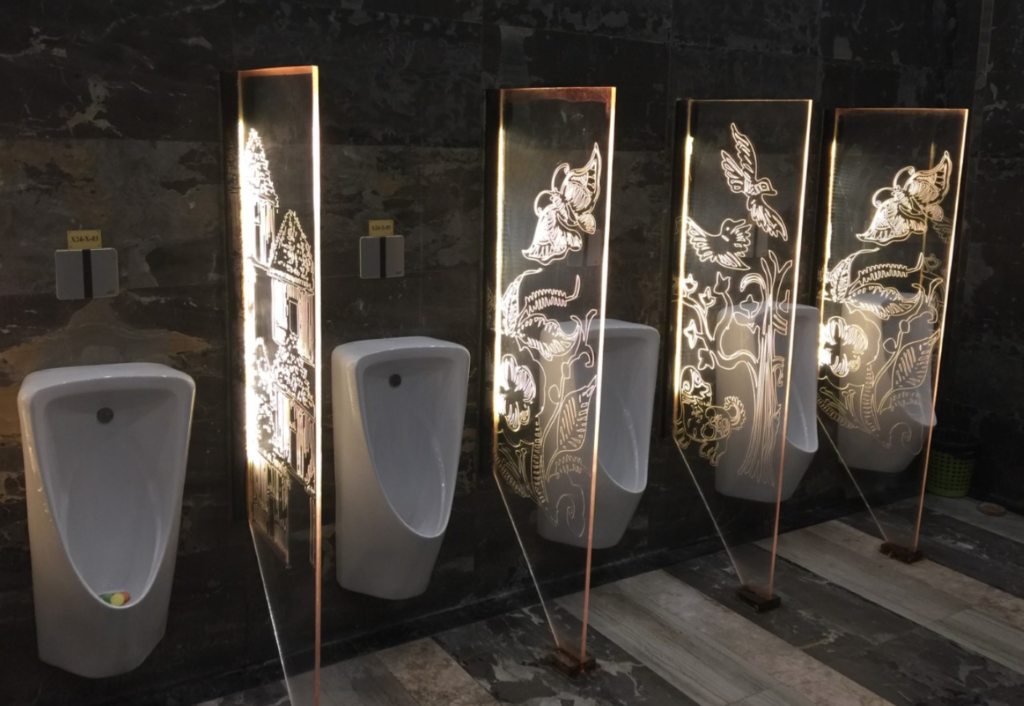
Outside the toilet was a big game trophy, fitting for a national park. And below the bull head are photos of a man and woman being honored for keeping the toilets spotless:
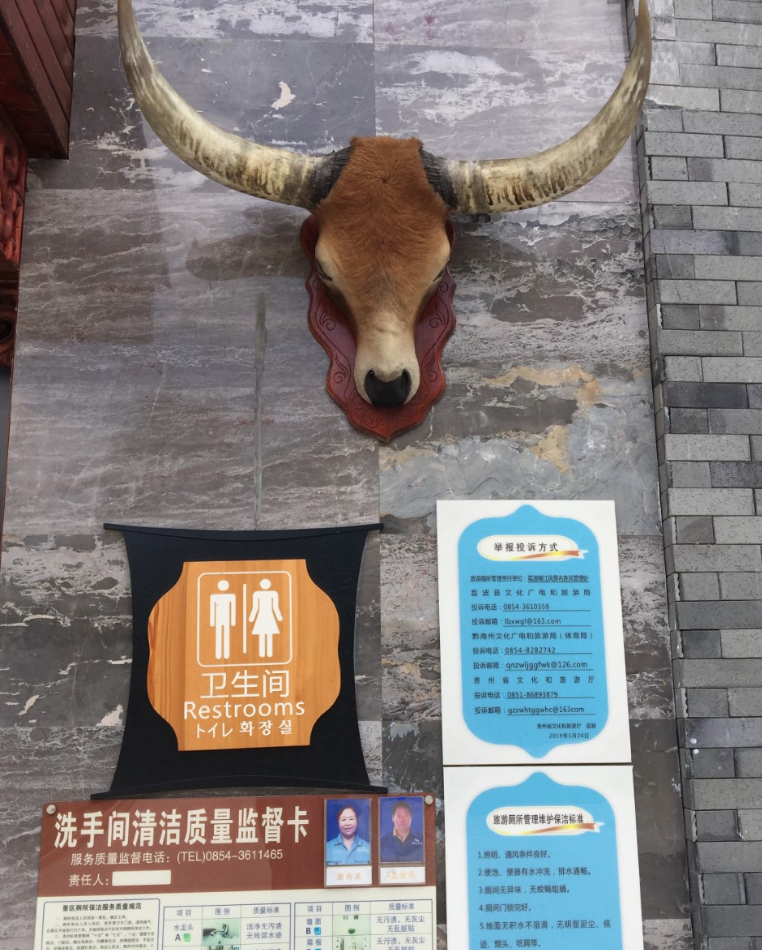
The Chinese don’t obsess about authenticity, rather they try to reshape the environment to make it more pleasing. They especially like waterfalls, and at one point we came across one that seemed almost shot out of a firehose:
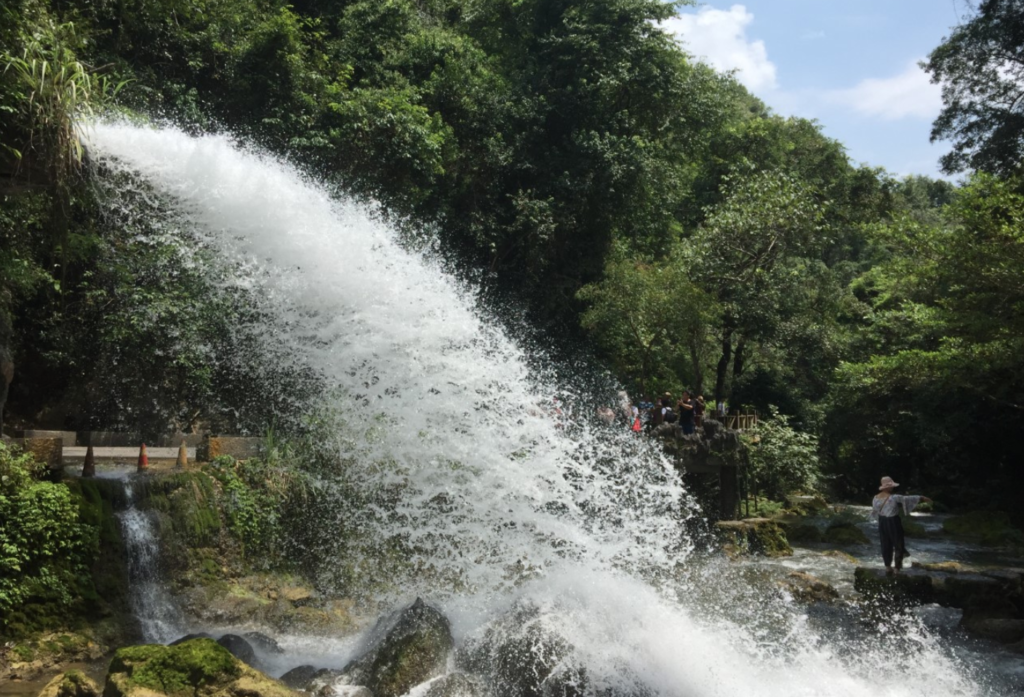
It turns out it was too good to be true; a fake stone ledge was manufactured to create this effect:
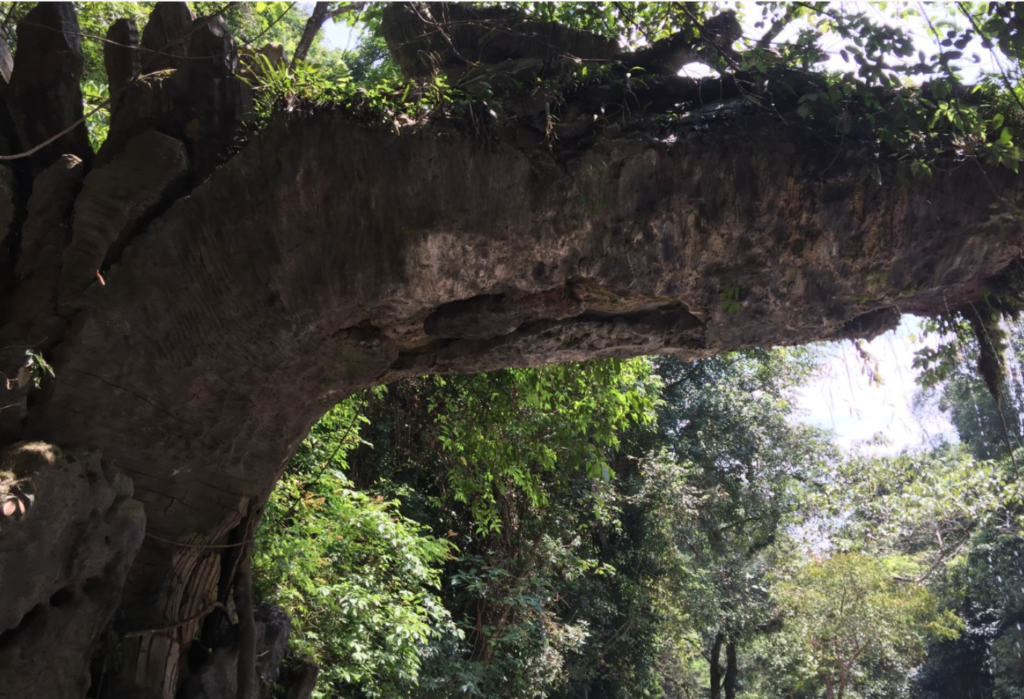
I wonder what Capability Brown would think of the Chinese national parks.
The attire is equally interesting. The women tend to dress up for hiking, with lacy or chiffon-like pastel-colored dresses being especially popular. Spiked heels too. They also seem to wear too much clothing, at least from a western perspective. It was 93 (34C) and humid, and I saw one woman wearing long pants, two shirts and a hood. Only her ponytail poked through the hood. That was exceptional, but almost all wore a lot of clothing. (BTW, the Chinese also dress up more when hiking in America, though not to such an extreme. Fear of tanning?)
Fortunately for westerners, the Chinese tourists clump together. It can seem like Times Square in one area, and completely empty in another equally nice area that is not “recommended”. Sort of the way the Mona Lisa room is packed and equally nice rooms of art in the Louvre are not crowded.
Unfortunately for westerners, the ubiquitous fencing and regimentation are a problem everywhere in China. And the lack of maps. It’s hard to just wander off on your own, down some lonely trail. Fortunately, people over 60 get in free, and that includes affluent foreigners who don’t deserve this privilege. Foreigners are so rare in the places I visited that there was always a discussion of whether the over 60 rule applied to me, and on one occasion I lost. So at least once I contributed money to the Chinese government—otherwise I mostly aided the private sector. . . .
. . . Except for the hotel at the next stop, which included Huangguashu, Asia’s biggest waterfall. That hotel was located right in a national park, and my wife thinks it was government-owned. That make sense, as the service was far worse than the other 4 hotels, which were privately-owned. The front desk wouldn’t even help us get a taxi to the bus station—“take Didi”. China’s version of Uber is called “Didi” and is far worse than Uber. It wouldn’t survive if they allowed competition from Uber and Lyft. The Chinese government is doing a major disservice to Chinese consumers.
I should also mention the wash cloth scandal. When checking out a scowling lady held up an incriminating picture on an iPhone, showing a big smudge of dirt on a white wash cloth found by the maid. This held up getting our (cash) security deposit back, and an investigation was undertaken to determine if the wash cloth could be cleaned. I was to blame as I had used it to clean dirt off my shoe. But keep in mind this is probably a 25-cent item, and of course it can be cleaned. We were eventually found not guilty and got our security deposit back. This sort of stuff happens almost every day in the more “backward” parts of China. Seriously, consider Japan if you plan to visit East Asia.
In some ways, China is increasing difficult for foreign tourists. Because of Didi, the taxi system is all messed up, and now it’s often difficult to get a regular taxi. WeChat is great for the Chinese making purchases, and because it’s a debit transaction it’s perfect for solving the “trust” problem in China. But it’s bad for tourists who want to use credit cards. Even cash may not be accepted, due to a lack of exact change.
Because lots of Chinese can now afford to travel, western tourists have gone from being royalty in the 20th century to loser cheapskates not worth bothering with in the 21st century. Maybe this helps to explain the anti-Chinese prejudice that has recently developed among America’s elite. They resent losing that feeling of being on top when visiting China.
WeChat is so common that credit cards are virtually non-existent. We presented a credit card at a huge fancy restaurant near the waterfall (we were the only diners.) The very young waitress looked befuddled at first, and then waved it over the top of the card reader, as someone might put their iPhone over a QR code when using WeChat. My wife had to show her how to insert the credit card into the chip reader. It’s not unlikely that this restaurant in a luxury hotel costing $500/night had never seen a credit card. The high-quality meal was cheap, however:
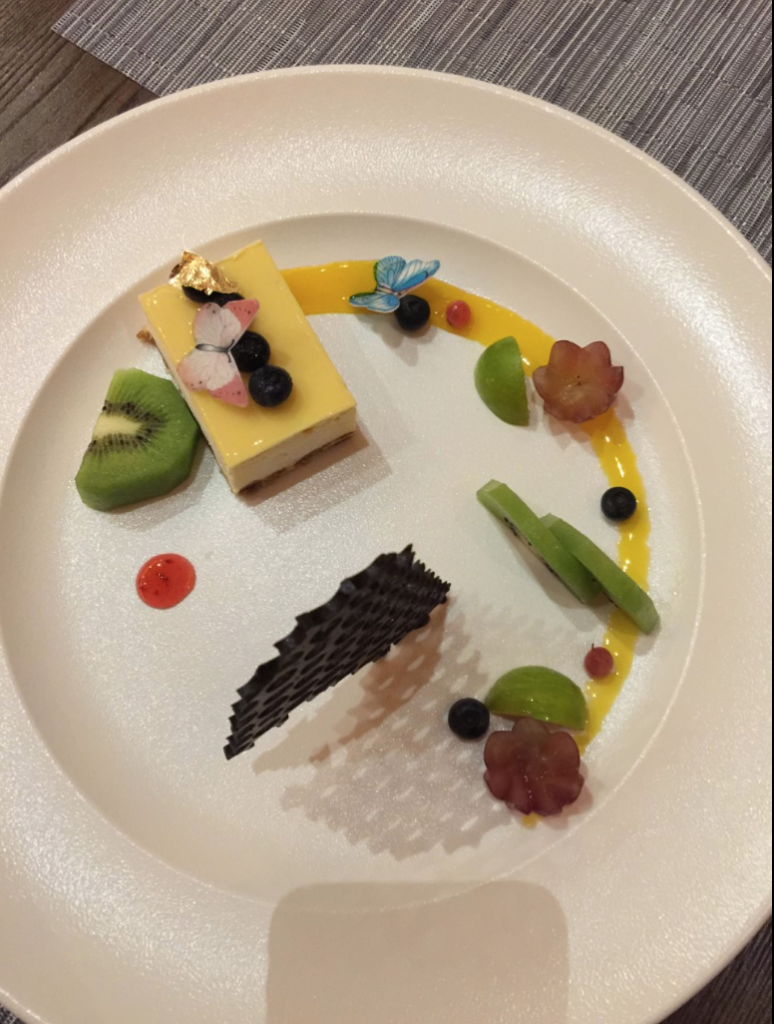
The first food picture I recall ever taking.
7. Why is Chinese Service so Bad?
It’s not always bad. The owners of the little family run hotels do try. But they can’t resist cutting corners to save money. Many other people in the service sector don’t care at all. Park employees are not like the outdoor enthusiasts that work at Yellowstone. It’s just a job. If they see people smoking or throwing trash off the tour bus, they just don’t care. There are several possibilities for the bad service:
1. Culture
2. Poverty
3. Legacy of communism
It’s probably a bit of all three. It’s worth noting that service in China is getting less bad. But that means rising from 3 to 15 on a scale of 1 to 100. China’s also getting richer and less communist. Other Chinese areas like Taiwan, Hong Kong and Singapore have better service than the mainland; so it can’t just be Chinese culture. Of course, mainland China is poorer than those three areas, but that’s also partly a legacy of communism.
And like everything in China (construction quality, aesthetics, etc.) service is wildly uneven.
8. Deja vu all over again
One thing I really like about visiting China is that it reminds me of my youth, especially in the way that children roam free. My brother and I used to ride in an open trailer that my dad pulled behind his car, bumping over railroad tracks. I saw the same thing in rural China. Also, kids play with firecrackers, as we used to do. They ride motor scooters at roughly age 10. You see tiny three-year olds sitting behind their mom on a scooter going down the highway in the driving rain, holding on for dear life (no helmets). Six-year olds cross busy urban streets in the city, all by themselves. Imagine a country free of helicopter parents!
I also enjoy seeing people smoking in places where it was once allowed in the US. On one of our buses even the driver was smoking, despite this sign:
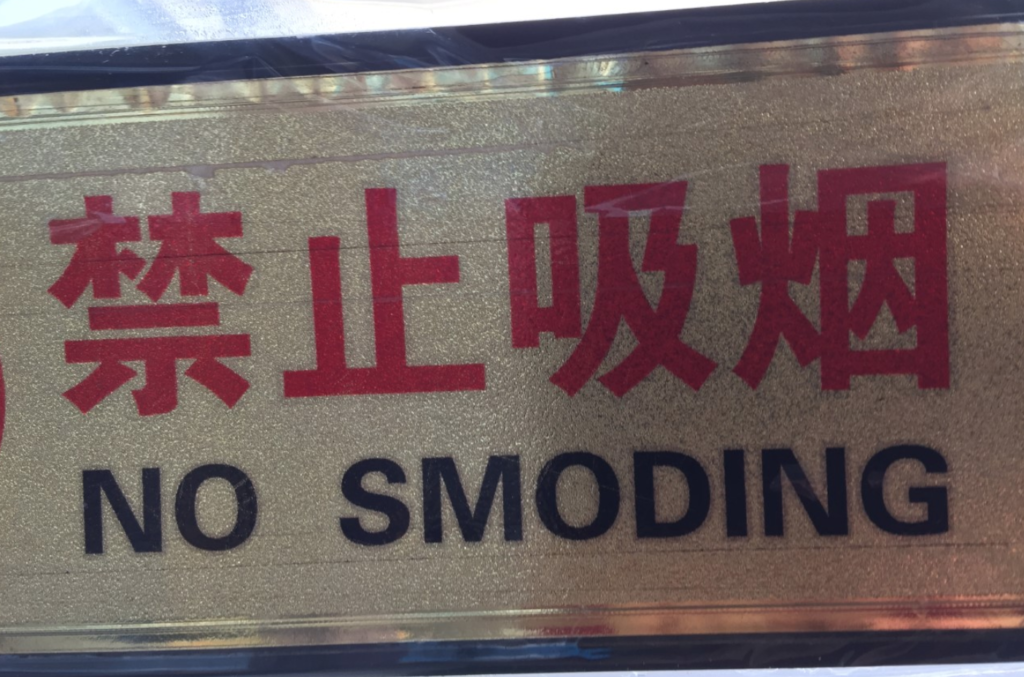
Chinglish can be charming. Highways signs warn “Don’t drive tiredly”. While consumer foods stress how they are “not unpleasant”;
Many things in China remind me of America circa 1960. People tend to dress up more. Their sitcoms look like the broad and simple (pre-irony) comedies of the “I Love Lucy” era. The music is often the schmaltzy stuff my parents enjoyed. Even on budget local airlines, the stewardesses look like models, and explain the safety devices with ultra-refined hand gestures.
A Beijing art gallery had an exhibit that consisted of old Kodachrome pictures of middle-class American life in 1959, such as housewives with aprons taking care of spotless children. The dealer told me these color pictures appeal to Chinese buyers, as this was a depressing, grey period in Chinese history.
BTW, the bus with the no smoding sign also had plenty of trash cans for people to throw stuff into, right in the aisles! Just step over them!
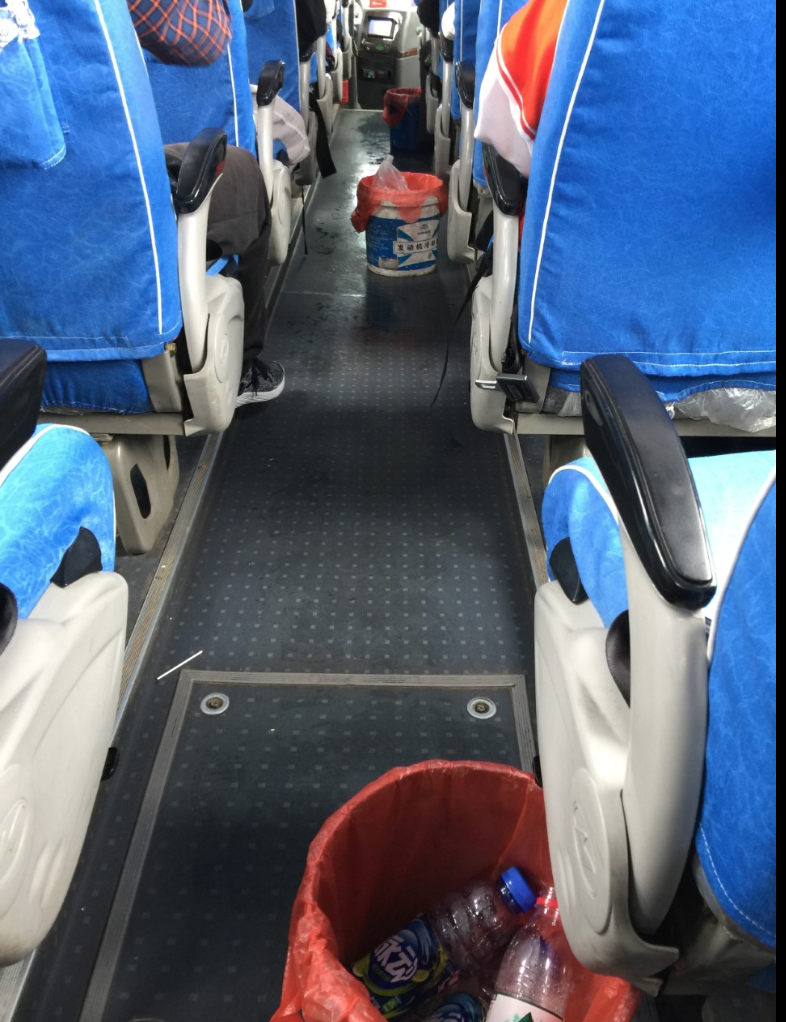
Intercity buses also lack toilets, even on 4- or 5- hour trips. Plan ahead. Buses frequently stop at gas stations to fill up. And there is endless security in the boarding process, one check after another. On one narrow mountain road (no guardrails) the bus got behind a series of trucks carrying oversize components for huge windmills, and engaged in a long frustrating process of trying to pass without going over the cliff.
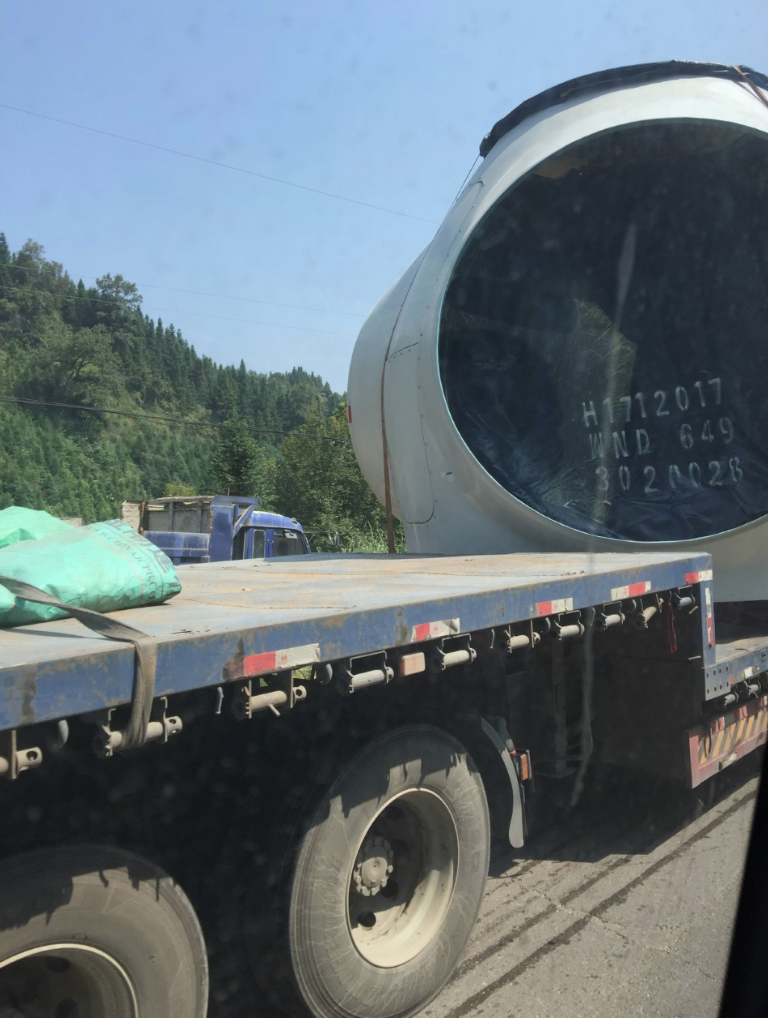
There are no sidewalks in rural areas, so men, women, and schoolchildren walk along the same dusty highways as these big buses and trucks.
9. Kaili Blues
It was the final stop that gave me the feeling of Bi Gan’s films. It rained for the final four days of our trip. Seeing the motor scooters wave through the wet dark night on narrow roads brought back memories of “Kaili Blues” and “Long Day’s Journey Into Night”. When we arrived at our last hotel south of Xingyi, the room had water coming through the roof. So did the next room they chose for us. The third room was mostly dry, and wasn’t bad if you don’t mind giant spiders and lots of mosquitoes. And no door knob. (You had to padlock the door on leaving the room.) We stayed two nights, and at both restaurants we went to for dinner they acted like we had woken them from a nap when we arrived. Everything is very informal in the countryside. And really cheap.
The owner of the second restaurant took my picture to use in future advertising. So did the owner of the hotel. Apparently if a westerner visited their establishment it had to have some merit.
The Chinese create endless miles of landscaping, with beautiful flowering hedges along tourist highways and thousands of orate lampposts. And it all leads to a stunningly beautiful lake, which is . . . full of floating water bottles. China constantly throws curveballs at you. One minute you think everything is garbage, and the next you see beauty that takes your breath away.
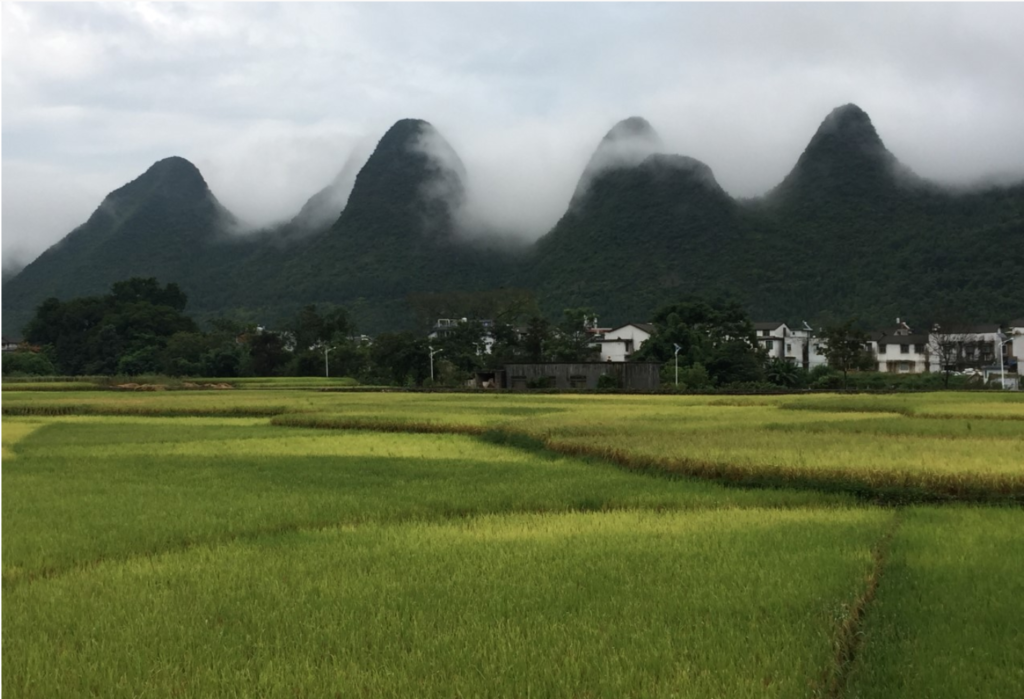
While driving to the airport for our flight back to Beijing, the sun finally came out and the air was incredibly clean after 4 days of rain (this shot was from the plaza of a conference center outside Xingyi, a center of gold mining):
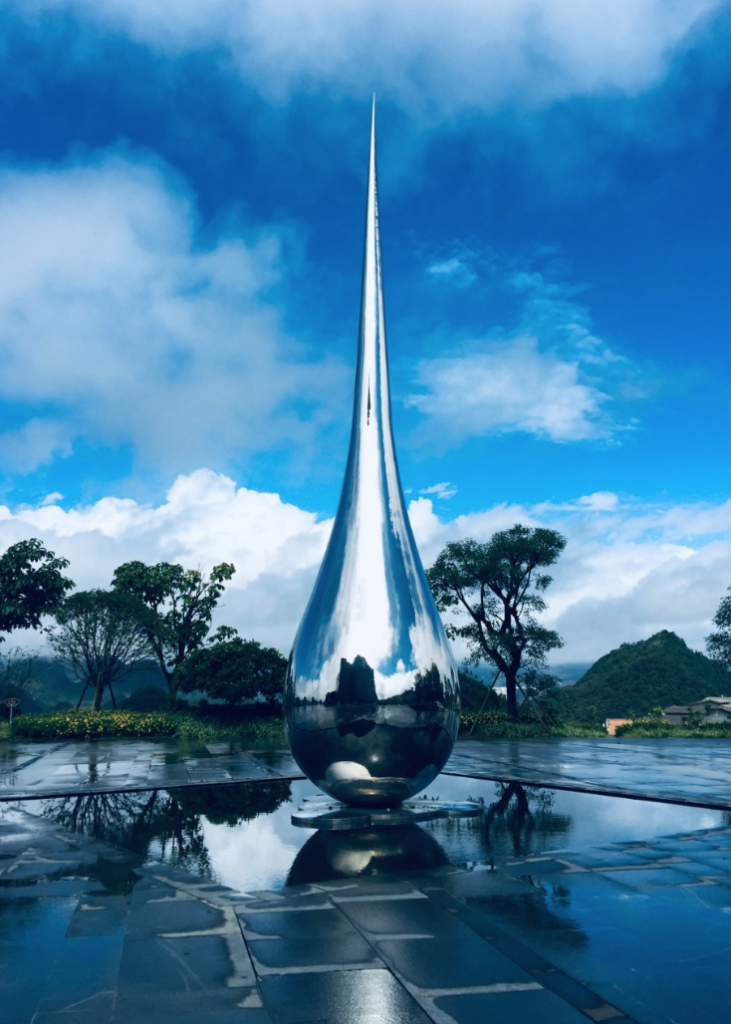
PS. Weird things happen all the time. I’d never once seen my name used in a commercial application, not in 63 years, until spotting this young woman sitting across from me in a Guizhou train station:
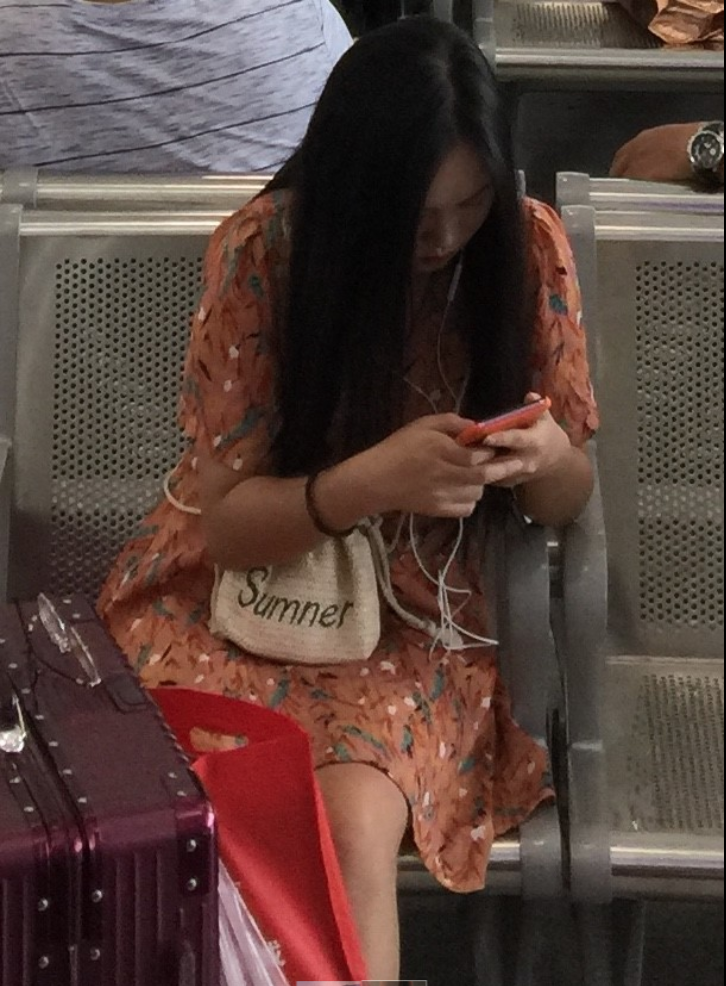
WTF? A sign? And how about this house in Libo:
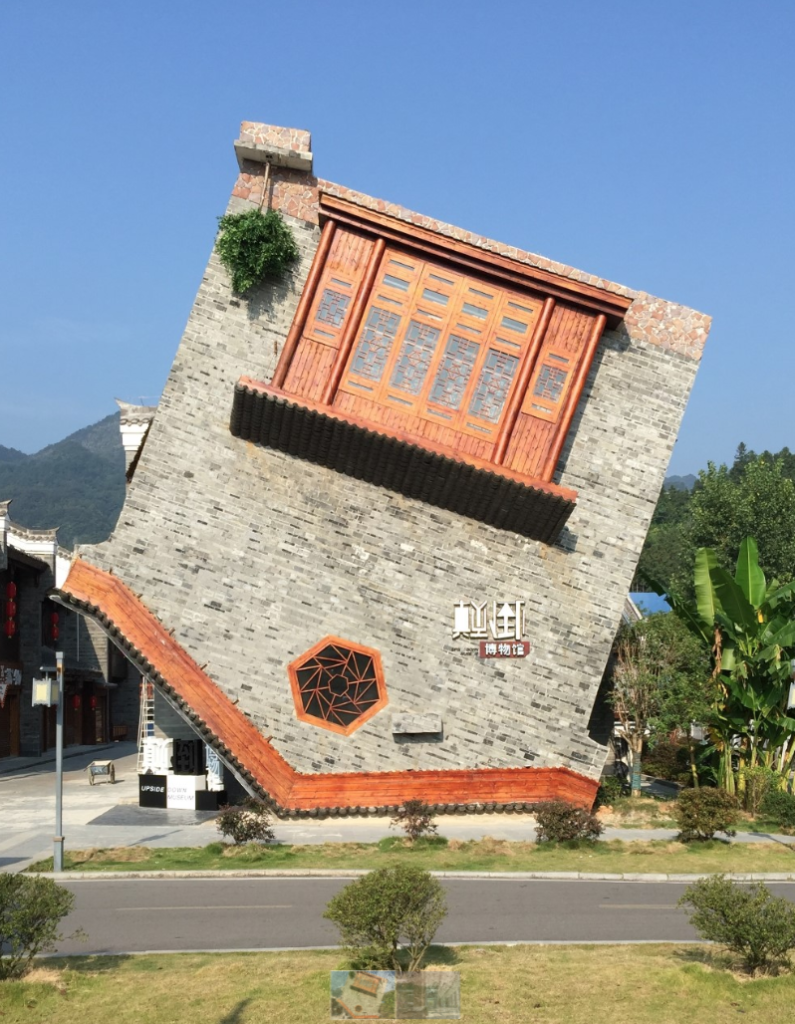
It’s an upside-down symbol of an upside-down country. The taxi driver didn’t want to use AC in 93-degree heat, and two days later the taxi blasted the AC when it was cool and rainy out.


